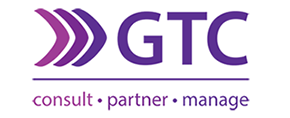Understanding the role of gold in your investment portfolio
 Samir Narotam
Samir Narotam
Portfolio Manager
_______________________________________________________________________________________________________
Gold in focus: Safety, strategy, strength
 The enduring appeal of gold as a tangible asset and a portfolio diversifier persists in today’s dynamic financial landscape. Historically viewed as a safe haven and inflation hedge, gold offers a unique value proposition. However, the methods for gaining exposure – physical bullion, Exchange Traded Funds (ETFs), and gold-linked companies (stocks) – each present distinct characteristics, risks, and potential rewards. This article aims to provide a balanced perspective on these investment avenues, particularly in light of recent gold price rallies.
The enduring appeal of gold as a tangible asset and a portfolio diversifier persists in today’s dynamic financial landscape. Historically viewed as a safe haven and inflation hedge, gold offers a unique value proposition. However, the methods for gaining exposure – physical bullion, Exchange Traded Funds (ETFs), and gold-linked companies (stocks) – each present distinct characteristics, risks, and potential rewards. This article aims to provide a balanced perspective on these investment avenues, particularly in light of recent gold price rallies.
The allure and the caution: Understanding gold’s role
Gold’s intrinsic value, rooted in its scarcity and historical significance, sets it apart from fiat currencies. Its potential to act as a safe haven during economic uncertainty and a hedge against inflation contributes to its diversification benefits within a portfolio. However, it’s crucial to recognize that investment decisions, especially in response to short-term price movements, require careful consideration. A recent surge in gold prices might tempt investors, but chasing rallies without understanding the underlying fundamentals and associated risks can be imprudent.
 Navigating the investment landscape: Physical gold
Navigating the investment landscape: Physical gold
The most direct way to own gold is by acquiring physical bullion, such as bars or coins. This method offers the tangible security of holding a physical asset. In times of systemic financial risk, physical gold is not subject to counterparty risk – the risk that a financial institution or intermediary might default on its obligations.
However, holding physical gold comes with its own set of challenges and risks, potentially amplified during a price rally:
- Storage costs and security: Safely storing physical gold requires secure facilities, which often involve ongoing costs for storage and insurance. These costs detract from potential gains, especially if the price rally is short-lived.
- Liquidity and transaction costs: Selling physical gold can be less liquid than other investment forms, and transaction costs, including dealer markups and assaying fees, can erode returns.
- Divisibility and transportation: Dividing and transporting large quantities of physical gold can be cumbersome and costly.
- No income generation: Physical gold does not generate any income, such as dividends or interest. Its return is solely dependent on price appreciation and offers no buffer against potential price corrections after a rally.
While physical gold can play a role in wealth preservation, its practical limitations and costs make it less suitable as a primary investment vehicle, especially for smaller investors.
The convenience of ETFs: Tracking the price of gold
Gold Exchange Traded Funds (ETFs) offer a more liquid and accessible way to gain exposure to the price of gold without the complexities of physical ownership. These funds typically hold physical gold bullion and issue shares that track the spot price of gold.
The advantages of gold ETFs include:
- Liquidity and ease of trading: ETF shares can be bought and sold on stock exchanges like any other stock, offering high liquidity and relatively low transaction costs.
- Lower storage and insurance costs: Investors avoid the direct costs and logistical challenges of storing physical gold. The fund bears these costs, which are reflected in the ETF’s expense ratio.
- Divisibility: Investors can buy and sell small quantities of gold exposure through individual ETF shares.
Risks associated with gold ETFs
- Counterparty risk: While most gold ETFs hold physical gold, investors are still exposed to the counterparty risk of the financial institution managing the fund. Although regulations aim to mitigate this, it’s not entirely eliminated.
- Tracking error: The ETF’s share price may not perfectly track the spot price of gold due to factors such as management fees and the costs of holding and managing the underlying gold.
- No underlying earnings: Similar to physical gold, gold ETFs do not generate any income. Returns are solely based on the appreciation of the gold price and offers no buffer against potential price corrections after a rally.
Gold ETFs provide a convenient and cost-effective way to track the price of gold and can be a useful tool for portfolio diversification.
Unearthing opportunity: Investing in Gold-linked companies (stocks)
Investing in companies involved in the exploration, mining, and refining of gold offers a different perspective on gold exposure. These companies, often referred to as gold miners, represent an equity investment in the gold industry.
The potential benefits of investing in gold-linked shares are compelling:
 Leveraged returns: The profitability of gold mining companies is often leveraged to the price of gold. A relatively small increase in the gold price can lead to a more significant increase in the earnings and share price of a well-managed gold mining company. This offers the potential for higher returns compared to directly tracking the gold price. While a rising gold price boosts profitability, a correction can significantly impact earnings and share prices.
Leveraged returns: The profitability of gold mining companies is often leveraged to the price of gold. A relatively small increase in the gold price can lead to a more significant increase in the earnings and share price of a well-managed gold mining company. This offers the potential for higher returns compared to directly tracking the gold price. While a rising gold price boosts profitability, a correction can significantly impact earnings and share prices.
- Income generation: Unlike physical gold or gold ETFs, gold mining companies can generateincome and distribute it to shareholders in the form of dividends. This provides a potential stream of returns beyond price appreciation, but companies might reduce payouts if gold prices fall significantly after a rally.
- Operational efficiency and growth: Gold mining companies are actively managed businesses that can improve efficiency, expand production, and discover new reserves, all of which can drive shareholder value.
- Diversification within the gold sector: Investing in a portfolio of gold mining companies can provide diversification across different geographical regions, mining projects, and management teams, potentially mitigating company-specific risks.
Investing in gold-linked shares also carries specific risks:
- Operational risks: Mining operations are subject to various risks, including geological challenges, production disruptions, cost overruns, and environmental regulations, which can impact profitability.
- Management risk: The success of a gold mining company depends heavily on the quality and execution of its management team.
- Broader market risk: Gold mining stocks, being equities, are also subject to broader market sentiment and economic conditions, which can influence their price movements even if the price of gold remains stable.
- Specific company risk: Each gold mining company faces unique financial and operational risks that can affect its individual performance.
Strategic allocation with diversification in an investment portfolio
While a gold price rally might create short-term excitement, a prudent long-term strategy involves understanding the fundamental reasons for including gold in an investment portfolio. A strategic allocation to a diversified basket of well-researched gold mining companies can provide exposure to the gold sector’s upside while offering the potential for returns beyond the metal’s price appreciation. This approach requires a disciplined investment process that looks beyond short-term market noise.
Regardless of the allure of a gold price rally or the chosen investment vehicle, diversification remains the cornerstone of a resilient investment portfolio. Over-allocating to any single asset, especially based on a recent price surge, can significantly increase risk. A well-balanced portfolio comprising various asset classes (which can include a strategically chosen gold-linked investment), aligned with individual risk tolerance and long-term goals, is essential for navigating market volatility and achieving sustainable growth.
In conclusion, while a gold price rally might present opportunities, investment decisions should be grounded in a thorough understanding of the risks associated with each investment method. Chasing rallies without due diligence is a recipe for potential disappointment. A strategic and diversified approach remains the most prudent path for building a secure retirement.






